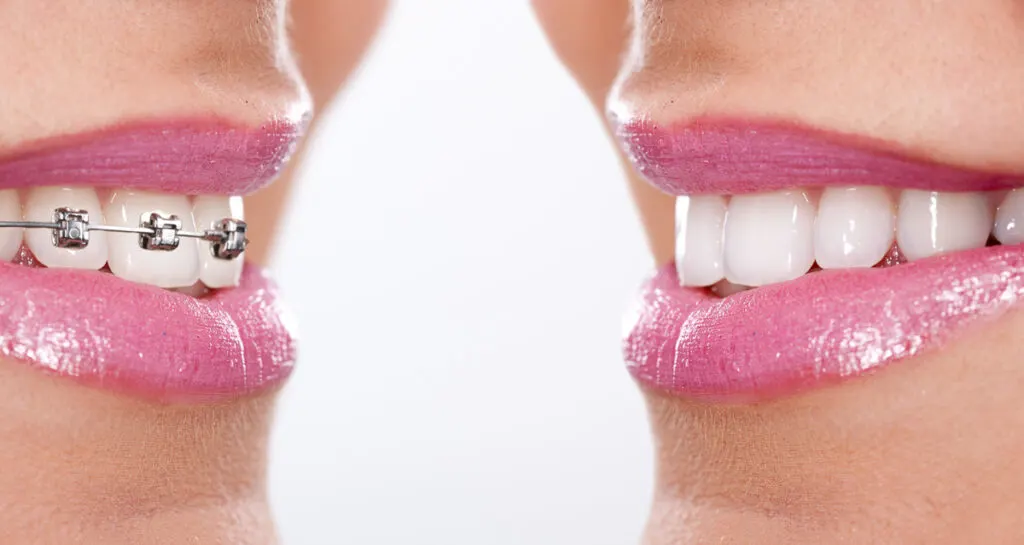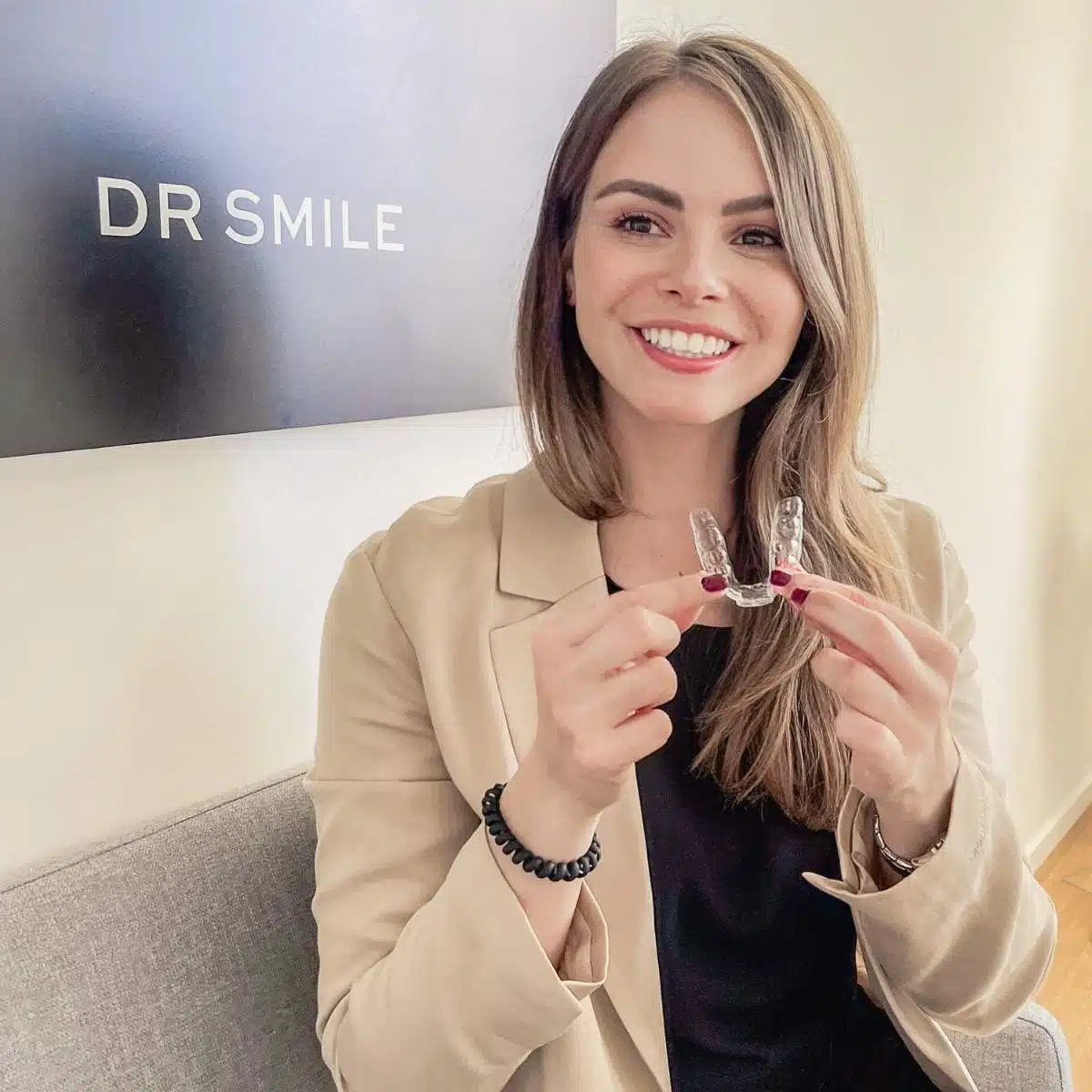Permanent Retainer: Maintaining a Beautiful Smile with Ease. Everything you need to know and common Questions about this Topic.
Imagine undergoing orthodontic treatment, investing time, effort, and financial resources to achieve a straight and beautiful smile.
Once the braces come off, your teeth have the potential to revert to their previous misaligned positions. This is where a permanent retainer comes to the rescue.
In this comprehensive guide, we’ll explore the world of permanent retainers, from their benefits and installation to their maintenance and potential risks.
So let’s dive in and learn more about how you can easily maintain that flawless smile.

Introduction to the Topic “Permanent Retainer”
Orthodontic treatment aims to correct dental misalignments and create a harmonious smile.
Braces or clear aligners play a significant role in achieving this goal; the journey doesn’t end there.
After the active phase of orthodontic treatment, the teeth must be held in their new positions to prevent them from shifting back. This is where a permanent retainer plays a crucial role.
What is a Permanent Retainer?
A permanent retainer, also known as a bonded or fixed retainer, is a thin wire bonded to the back of your teeth to maintain their alignment.
Unlike removable retainers, which can be taken out during meals and oral hygiene routines, permanent retainers remain in place 24/7.
There are two main types of permanent retainers: lingual retainers and bonded retainers. Lingual retainers are attached to the back of the teeth, making them virtually invisible.
On the other hand, bonded retainers are attached to the front surfaces of the teeth using a dental adhesive.
Advantages of Permanent Retainers
1. Ensuring long-term teeth alignment
One of the primary advantages of permanent retainers is that they provide continuous support to your teeth, ensuring they maintain their corrected positions over time.
By keeping the teeth aligned, permanent retainers help prevent relapse and preserve the results achieved through orthodontic treatment.
2. No hassle of removing and replacing retainers
Unlike removable retainers, which can be lost or misplaced, permanent retainers eliminate the need for removal and replacement.
Once bonded, they stay in place, requiring no effort on your part to wear them consistently.
3. Enhanced comfort and convenience
Since permanent retainers are fixed, you don’t have to worry about the discomfort associated with removable retainers.
No adjustments are needed, and you can continue your daily activities without interruptions.
4. Minimal impact on speech
Some individuals may experience a slight adjustment period when they first get a permanent retainer.
However, since the thin wire is discreetly placed behind the teeth, speech impediments are usually temporary and quickly overcome.
5. Maintenance and care tips
Caring for a permanent retainer is relatively simple. Regular brushing and flossing are essential to prevent plaque buildup.
Your orthodontist may recommend additional oral hygiene practices, such as using a floss threader or interdental brushes to clean hard-to-reach areas around the retainer.
Considerations Before Getting a Permanent Retainer
Before opting for a permanent retainer, it’s crucial to consult with an orthodontist who will assess your specific case and advise accordingly.
They will evaluate factors such as oral health, the alignment achieved after orthodontic treatment, and your long-term goals.
Understanding the treatment process and what to expect is vital. Your orthodontist will explain the steps involved, including the placement of the retainer, potential adjustments, and follow-up visits.
Cost is another aspect to consider. Permanent retainers may vary in price depending on factors such as the complexity of your case and the type of retainer recommended.
Additionally, you must check with your insurance provider to understand the coverage for orthodontic retainers.
Procedure for Getting a Permanent Retainer
The process of getting a permanent retainer typically involves the following steps:
- Initial consultation and evaluation: Your orthodontist will assess your case, discuss your options, and recommend the most suitable retainer type.
- Placing the permanent retainer: Once you decide to proceed, your orthodontist will carefully bond the retainer wire to the back or front surfaces of your teeth using a dental adhesive.
- Adjustments and follow-up visits: Over time, your orthodontist may need to make minor adjustments to ensure the retainer continues to provide optimal support. Regular follow-up visits will be scheduled to monitor the progress and address concerns.

Living with a Permanent Retainer
1. Initial discomfort and adaptation period
After getting a permanent retainer, you commonly experience some initial discomfort or a sense of foreignness in your mouth.
This sensation typically fades within a few days as you adapt to the presence of the retainer.
2. Oral hygiene practices
Maintaining excellent oral hygiene is crucial when you have a permanent retainer. Regular brushing and flossing are essential to prevent plaque buildup and maintain gum health.
Your orthodontist may recommend specific products or techniques to ensure thorough cleaning around the retainer.
3. Diet modifications
While a permanent retainer allows you to eat a wide variety of foods, avoiding excessively hard, sticky, or chewy foods that could damage the retainer or become lodged between the wire and the teeth is advisable.
4. Regular dental visits and check-ups
To ensure your teeth and retainer remain in good condition, it’s important to attend regular dental visits.
Your orthodontist will monitor the condition of the retainer, provide professional cleanings, and address any concerns that may arise.
Potential Risks and Disadvantages
While permanent retainers offer numerous advantages, it’s important to be aware of potential risks and disadvantages. These may include:
1. Potential for plaque buildup
Since permanent retainers are affixed to the teeth, they can trap plaque and food particles, increasing the risk of dental issues such as cavities and gum disease.
Diligent oral hygiene practices are crucial to prevent these problems.
2. Increased risk of gum disease
If not properly maintained, a permanent retainer can contribute to gum disease.
Regular brushing, flossing, and professional cleanings are necessary to keep your gums healthy.
3. Chances of retainer breakage or detachment
While rare, there is a possibility of a permanent retainer breaking or becoming detached.
It’s important to contact your orthodontist immediately if you notice any damage or loosening of the retainer.
4. Additional dental care requirements
A permanent retainer may require additional dental care, such as using special flossing techniques or interdental brushes.
Your orthodontist will guide the best practices for maintaining your retainer and overall oral health.
How Long Does a Permanent Retainer Last?
The lifespan of a permanent retainer can vary depending on various factors, including the type of retainer and how well it is maintained.
On average, a permanent retainer can last several years or even longer.
However, it’s important to note that they may require replacement or removal at some point due to wear and tear or changes in your dental needs.
Alternatives to Permanent Retainers
While permanent retainers offer long-term teeth alignment, they may not suit everyone.
Some alternatives include:
1. Removable retainers
Removable retainers, such as Hawley retainers or clear aligner-based retainers, can be taken out for meals and oral hygiene routines.
They offer flexibility and ease of use but require consistent wear to maintain teeth alignment.
2. Clear aligners
Clear aligners like Invisalign can be used for individuals who require further orthodontic treatment or minor adjustments.
They are removable, virtually invisible, and provide the benefits of both orthodontic treatment and a retainer.
Conclusion on the Topic “Permanent Retainer”
Investing in a permanent retainer can be a wise decision to maintain the results of your orthodontic treatment.
With their ability to provide continuous support and long-term teeth alignment, permanent retainers offer convenience, comfort, and peace of mind.
By following proper oral hygiene practices and attending regular dental visits, you can enjoy a beautiful smile for years.

FAQs on the Topic “Permanent Retainer”
Is getting a permanent retainer painful?
The process of getting a permanent retainer is generally painless. Some individuals may experience minor discomfort or sensitivity during placement, but this discomfort is usually temporary.
Can I eat normally with a permanent retainer?
Yes, you can eat a wide variety of foods with a permanent retainer. However, avoiding excessively hard, sticky, or chewy foods that could damage the retainer or get stuck between the wire and the teeth is advisable.
How often should I visit my orthodontist after getting a permanent retainer?
It is recommended to visit your orthodontist as per their instructions. Regular check-ups are important to monitor the condition of your teeth and retainer, ensure proper maintenance, and address any concerns that may arise.
Can a permanent retainer be removed if necessary?
While permanent retainers are designed to stay in place for a long time, they can be removed if necessary. It’s important to consult with your orthodontist if you have any concerns or require removal for any specific reason.
Are permanent retainers noticeable?
Permanent retainers are typically placed on the back surfaces of the teeth or made from a thin wire, making them discreet and less noticeable than traditional braces. Lingual retainers, in particular, are virtually invisible when you smile.


